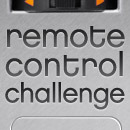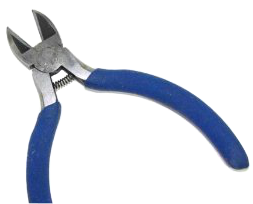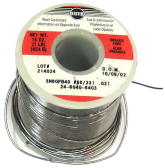Foreword
For the majority of our projects we have been using pretty much the same PCB manufacturer called Itead Studio. They have always been the front runners offering good quality at exceptionally low prices. For all our projects the quality has always been ‘good enough’ until the moment when we began making Olinuxino and noticed that our design was actually stretching the factory’s capabilities. Regardless of that we managed to build and successfully completed the first prototype. But the story doesn’t end here. Recently we have been contacted by PCBWay and been offered to compare their quality against our preferable manufacturer and then publish the results. We were given a discount and in the end we had nothing to loose so… we agreed. Needless to say that as a reference design we picked the Olinuxino board. An account has been created and an order has been placed. We opted DHL shipment service and ironically it turned out to be 5 times more expensive than the actual price for PCB manufacturing. Whether it was because the shipment was too expensive or the manufacturing was way too cheap – we leave it up to the readers.
The parcel arrived in less than 2 weeks since placing the order. The beginning was promising. Upon opening the satchel a neat box with PCBWay logo was revealed:
The content was wrapped into packaging foam. Nice:
The box contained ten boards in a vacuum bag:
It is time to look at the board under a microscope. And as a reference point let’s use the PCB made by Itead Studio, it has blue solder mask while the board from PCBWay has green one. Let’s also gather some statistical information, say, count the number of imperfections which can potentially impact the electrical characteristics of the boards. For example, annular ring tangency can certainly do such impact while poor quality of the silkscreen is less likely to do so. Let’s start with the top sides of the boards.
Top side analysis
The first defect is on the green board: the mounting holes are not round but rather elongated. The blue PCB is certainly better here, however, it doesn’t impact the quality of the assembly:
Another mounting hole and the same defect is present again on the green board. At least the manufacturer has been consistent. On a flip side, the blue PCB has an annular ring tangency which may impact the quality of an electrical connection so number of defects for the blue boards is 1:
The slots look reasonably good for both boards, no visible issues:
These two slots exhibit some kind of wavy anomaly along their edges which is caused by the fact that slots are actually made of several round drills as the Eagle CAD doesn’t support slots (yes!). Not an issue but it is bit strange as to why there is no such pattern on the previous picture:
Both boards have defects, the blue one has two cases of annular ring tangency and absence of solder mask in between the pads (we have to admit that the pin pitch is only 0.4mm and it is very hard to maintain the solder mask but still). The green board has broken solder mask in between the pads. To sum up, the blue board has 3 defects, the green PCB has 1:
The blue board has inconsistent continuous line of silk screen while the green board has another type of silk screen defect. Both boards have either missing or broken solder mask in between of the pads so blue board solder mask defects is 1, green board solder mask defects is 1:
Two more annular ring tangency, the number of defects for the blue board is 2:
More annular ring tangency cases, the number of blue board defects here is 6:
Three more cases of annular ring tangency for the blue board and missing solder mask, the number of defects for the blue board is 4, for the green board it is 1:
Bottom side analysis
There are multiple annular ring tangency defects and inconsistent silkscreen line for the blue board, both boards have missing solder mask between pads, number of defects for the blue board is 9, for the green board is 1:
Silkscreen is visually better for the green board, still the number of defects for the blue board is 3 and for the green board is 1:
The number of annular ring tangency cases for the blue board is 6, for the green board is 2:
The silkscreen is visibly better for the green board, however, those defects are not critical:
Again, the silkscreen is visibly better for the green board, however, those defects are not critical:
The number of annular ring tangency cases for the blue board is 4, for the green board is 1:
The silkscreen is visibly better for the green board, however, those defects are not critical:
Links:
- Itead Stidio: https://www.itead.cc
- PCBWay: https://pcbway.com
The conclusion
| Itead Studio / PCBWay quality comparison | ||
| Itead Studio | PCBWay | |
|---|---|---|
| Broken traces | 0 | 0 |
| Short circuits | 0 | 0 |
| Annular ring tangency defects | 35 | 4 |
| Missing solder mask defects | 5 | 5 |
| Total | 40 | 9 |
As it already became obvious, the preferred PCB manufacturer for us at this very moment would be PCBWay. However, our design stretched even PCBWay’s capabilities. Still, the results are pretty impressive taking into account that we paid only 5 USD for the manufacturing of 10 boards.

































Leave a Reply
You must be logged in to post a comment.